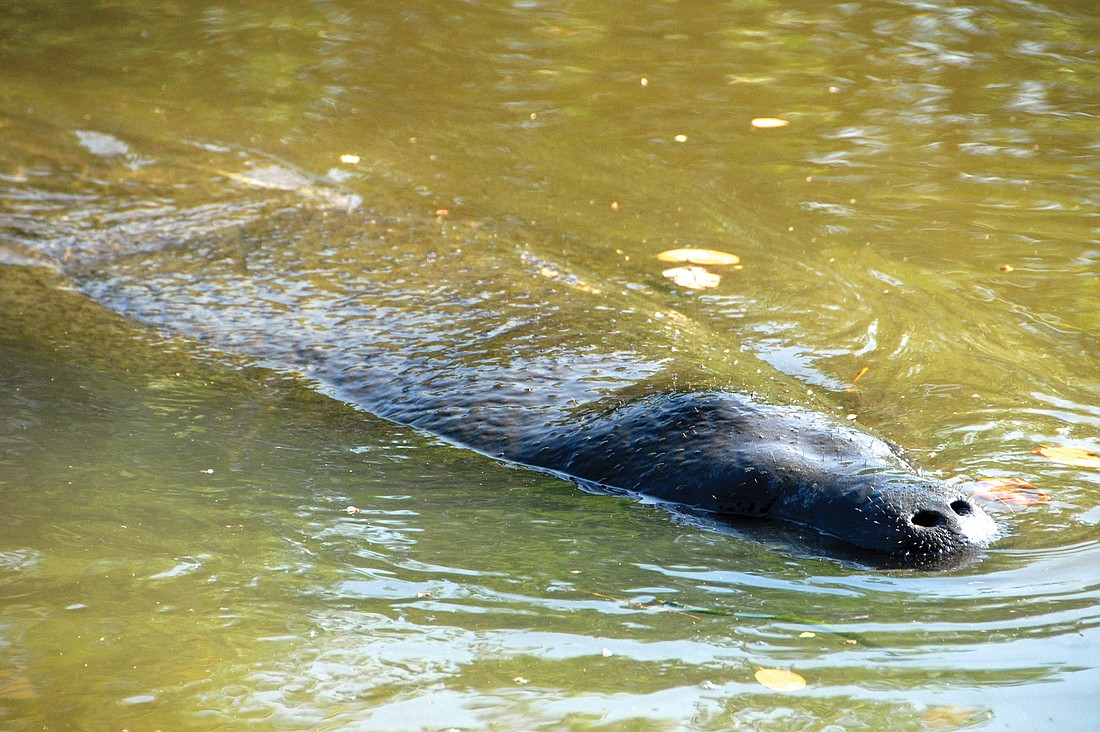- April 15, 2024
-
-
Loading

Loading

Not only can speeding boats cause property damage in Siesta’s canals, they also pose a threat to a pod of manatees that has been making its home in the Grand Canal for the two years, Siesta Key Association members learned at their Aug. 4 regular meeting, at St. Boniface Episcopal Church.
Sarasota County Commission Chairwoman Nora Patterson has contacted staff to determine whether the county can improve the situation by posting a new sign at the mouth of the canal to caution boaters about their speed.
Following up on a discussion during the July meeting, SKA President Catherine Luckner explained she had learned “there is no speed attached to ‘no wake.’” The stipulation simply means a boat can move as fast as possible without producing a wake, she said. “It’s going to be different depending upon the watercraft.”
She reiterated that anyone seeing a speeding boat may call 365-TAGS (8247) to report the registration number as well as the date and time of the incident. “Hopefully,” Luckner said, the boat “is not going by so fast you can’t read (the tag).”
Dave Thomas, a new member of the SKA’s Environmental Committee, said that although state law stipulates boaters stay at least 70 feet away from a manatee, Mote Marine staff told him manatees typically swim to the deepest part of the water they’re in when they hear boats approaching.
Unfortunately, Thomas said, the deepest water in the Grand Canal is right in the middle of the channel, “where the boat is.”
Besides, he pointed out, the canal itself is no more than 40 feet wide in some places. When a boater cannot achieve the 70-foot limit, he added, the law says the vessel must come to a full stop until the manatees have moved far enough away.
The manatees he has been observing, Thomas said, “come (into the Grand Canal) in the morning, and they go up to the end for lunch. They have some grass, then they come back out in the afternoon.”
He has been following them in his kayak, he told the SKA board and the 10 audience members.
“I’m amazed that they know their way … I was lost,” he said.
Thomas added that the lack of signage alerting boaters that the canals are no-wake zones and that manatees may be present compounds the problems. The only sign he had seen about the speed limit, he said, is at the entry into the Grand Canal. He questioned how many people notice it.
Moreover, he said, as boaters travel through the canal, “They’re talking on the cell phone, listening to the radio, socializing, drinking, getting some sun … They’re doing everything but watching for wildlife.”
Thomas suggested the county put up temporary signs to alert people to the manatee population. Perhaps the best prospect for educating boaters, he said, would be a temporary floating buoy in the middle of the lagoon at the entrance to the Grand Canal. That lagoon is wide enough, he added, that boaters could maneuver easily around the buoy, but the sign would be visible.
Still, he said, “I don’t think we’re ever going to get people to stop going beyond idle speed … unless you sit in the Grand Canal and police it constantly.”
Audience member Nancy Deckard suggested county officials look into the use of motion detectors in the water to trigger flashing lights along the canal when manatees are swimming nearby. In areas up North, she said, where deer crossing highways can imperil themselves and drivers, the use of such motion detector/flashing light systems have proven effective.
“There is probably some sensor that they could put underwater,” SKA Vice President Peter van Roekens said.
Board member Joe Volpe volunteered to work with Thomas in contacting state officials about more speed-limit signage along the waterway.
Patterson suggested private homeowners could post signs on their seawalls.
“But I think the most effective thing, really, is to put (a sign) at the mouth of the Grand Canal (saying) it’s all idle speed in here,” she said.
“If we could put up something fresh,” Thomas said, “it would at least wake up everybody for the moment.”
“No guarantees,” Patterson told the group, “but I will send off an email to staff that this was a good idea.”
In her email, Patterson wrote Amy Meese, the county’s general manager of natural resources that regarding the signage request, “ … nobody, including myself, really knows what the county is or is not allowed in this respect.”
In the meantime, SKA board member Beverly Arias suggested someone contact local boat clubs and rental organizations to gain their cooperation in educating tourists about manatees in the canal. She wouldn’t have known what a manatee looked like in the water before taking a trip with a friend to see large numbers of them, she added. “They look like rocks.”
SKA board member Bob Waechter also suggested residents along the canal send donations to the Save the Manatee Club (www.savethemanatee.org). In return, he said, the club would send them signage.
“Get people to put some of those signs on their own pilings,” he said, adding that a door-to-door campaign could encourage participation in such an effort.
Thomas drew laughter when he said the ideal sign for the Grand Canal would be one featuring “a big inflatable manatee with a light on top.”